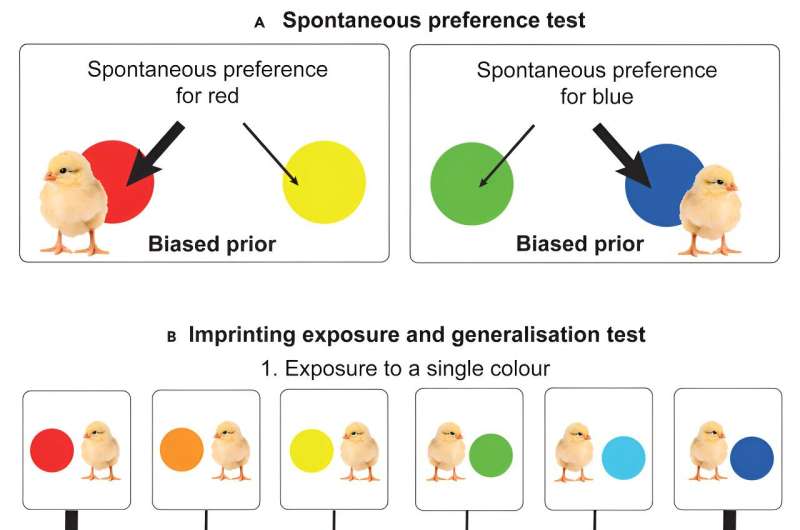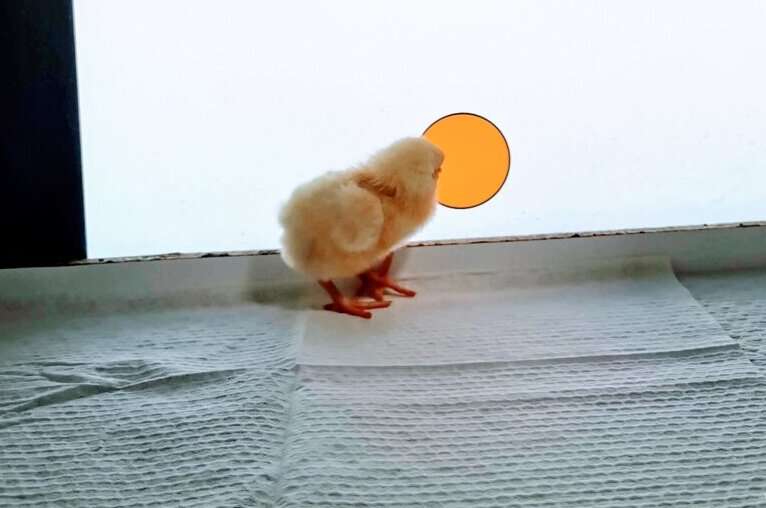This article has been reviewed according to Science X's editorial process and policies. Editors have highlighted the following attributes while ensuring the content's credibility:
fact-checked
peer-reviewed publication
trusted source
proofread
Color of mother hen impacts chick learning efficiency, study shows

In a study published in iScience, researchers at Queen Mary University of London have taken major steps in better understanding some key questions about learning and intelligence. Led by Dr. Elisabetta Versace, the team used chicks to try and answer some key unsolved questions related to intelligence (be it biological or artificial).
Called "the masters of fast learning" by Dr. Versace, Senior Lecturer at the School of Biological and Behavioural Sciences, "Chicks learn the features of their mother hen in just a few minutes, and then can recognize them from different points of view and under different light conditions with no training required."
Using a mechanism of fast learning called imprinting, the research team discovered that chicks learn faster with artificial moms of some colors over others.
Across four experiments, a total of 587 fresh, domestic chick eggs were incubated in darkness and hatched under controlled conditions. Newly hatched chicks were sexed and placed in individual cages with a 16:8 hour light-dark cycle. Their behavior was observed in rectangular enclosures equipped with high-frequency monitors displaying circular stimuli of different colors.
During the imprinting phase, chicks were exposed to a single moving stimulus for 16 hours. The test phase occurred on either day 2 or day 6 post-hatching, where chicks were presented with the imprinting stimulus and various test stimuli on separate screens.

The study revealed color-dependent bias in learning speed. Chicks exposed to a deep blue mother learned the features significantly faster when compared to mothers with colors ranging from blue to turquoise to green. Chicks raised by a green mother were much slower to distinguish their mother from similar test stimuli.
These findings demonstrate that chicks have a predisposition to learn faster based on specific color cues, highlighting the influence of both past experiences and innate preferences on learning efficiency.
"What stimuli are chicks prepared to learn faster?" Dr. Versace asks. "The colors that are rare in their environment, but frequent on the mothers, such as red and blue—colors that are uncommon in natural scenes, but more frequent in the animals."
These findings open new possibilities for potentially further understanding how our own brains learn new information and respond to different stimuli. There is also the potential for this breakthrough to lead to the development of faster and more efficient learning AI, reducing the errors and training by embedding meaningful priors (expectations) in artificial neural networks.
More information: Shuge Wang et al, Spontaneous biases enhance generalization in the neonate brain, iScience (2024). DOI: 10.1016/j.isci.2024.110195
Journal information: iScience
Provided by Queen Mary, University of London




















